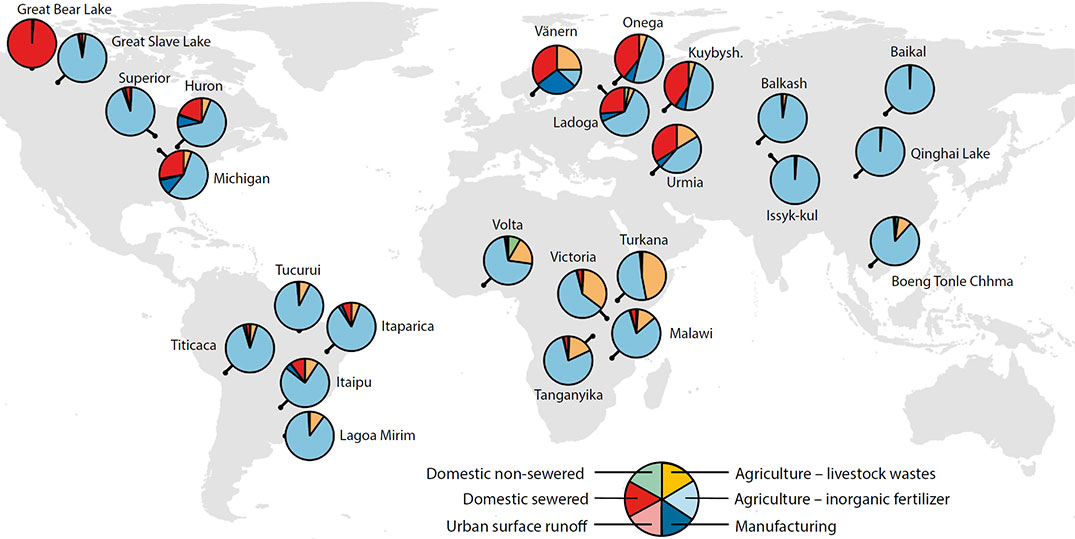Eutrophication represents the natural ageing process of lakes and wetlands, wherein they become enriched with nutrients and sediments, becoming more biologically productive, usually over a long period (Annex 9-1). Human activities can greatly increase these nutrient loads, accelerating this process, with detrimental effects on the whole ecosystem. The resulting algal blooms and aquatic plant growths interfere with many human water uses and can greatly affect the balance and diversity of aquatic flora, fauna and algal species (OECD 1982; Research Center for Sustainability and Environment-Shiga University and ILEC 2014). Major nutrient sources include inadequately treated domestic sewage discharges, urban and agricultural run-off, aquaculture and mariculture. Algal blooms can turn lakes, reservoirs and slow-moving rivers turbid and green in colour, depleting the water’s oxygen content when algae die and undergo decomposition. Some blue-green algal species are toxic to fish and livestock (O’Neil et al. 2012) and affect human health. A clear relationship between climate change and eutrophication of lakes has also been reported (Jeppersen et al. 2010).
More than half of the total phosphorus loads in the five UN Environment regions originate from inorganic agricultural fertilizer run-off (Figure 9.11). Livestock waste used as fertilizer can also be problematic because its nitrogen-phosphorus ratio is higher than that needed by crops, thereby potentially saturating soils with phosphorus, which can then reach waterbodies via non-point source run-off. River nutrient contributions to coastal areas almost doubled during 1970- 2000 (Annex 9-1). The Gulf of Mexico exhibits a ‘dead zone’ typically covering nearly 13,800 km2 attributed to nitrogen from grain fields in the midwestern United States of America carried down the Mississippi River, with eventual decay of the algal growth consuming the oxygen in the water, suffocating marine life. There are nearly four times as many dead zones (400) in the oceans now as there were in 1950, including in the Mediterranean Sea (Pearce 2018).

Some major urban areas in Asia and the Pacific experience groundwater nitrate concerns from sewer and septic tank leaks (Umezawa et al. 2009), and rural areas in many countries are affected by excessive chemical fertilizer application (Novotny et al. 2010). The effects of nitrates in groundwater has long been a public health concern, particularly as a causative factor in methemoglobinemia in infants (‘blue baby’ syndrome).
Although over half of EU surface waters improved during 1992-2010 (average river phosphate and nitrate levels decreasing by 57 per cent and 20 per cent, respectively), many still do not meet European Water Framework Directive environmental objectives (European Union 2000).